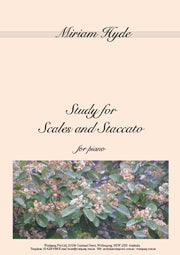1
/
of
1
Miriam Hyde
Study for Scales and Staccato
Study for Scales and Staccato
Regular price
$20.00 AUD
Regular price
Sale price
$20.00 AUD
Unit price
/
per
Couldn't load pickup availability
Share
 Study for Scales and Staccato. Grade 5
Study for Scales and Staccato. Grade 5
It is not clearly in any traditional form, nor was it intended to be. It just evolved spontaneously as a development of the opening scale and staccato figure (which we’ll call A.)
Download samples



